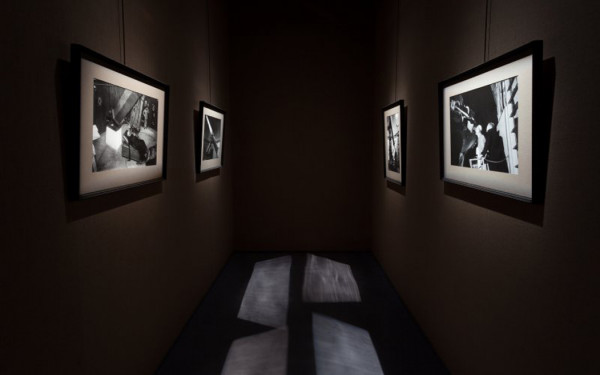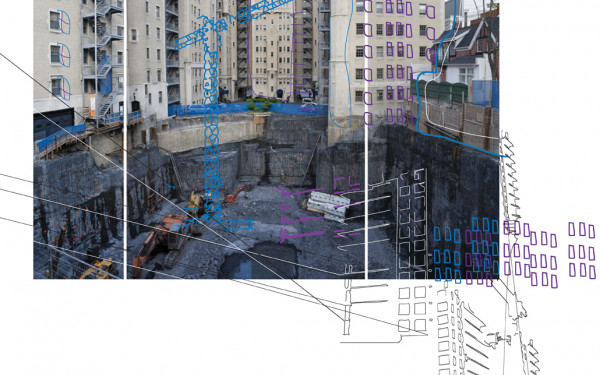Clear-Cut Ambition
Dan Handel’s CCA Exhibit Sees the Forest—and the Trees
“You know these shows,” says architect Dan Handel.
“You go into the thing and there’s a thing with 500 words, and you get tired before you even finish reading it. Then you go inside. Next to each object you have again like 60 words or something. Then you get completely disappointed and you leave.”
The use of text within architectural exhibitions, he argues, is a fine balance. “On the other side, you have the completely conceptual, more art-like exhibitions, where you have nothing.”
Handel, whose own show First, the Forest opens at the Canadian Centre for Architecture on Oct. 4, thinks there is a space to explore in the middle of the spectrum, however.
He’s not the only one who appreciates balance. For a well-established institution, the CCA is surprisingly willing to take risks with unorthodox display concepts and disseminating new ideas.
“If you try something new and different, you have no precedents, which is tricky, but also extremely exciting,” says Junia Jorgji, assistant to the head of exhibition production. “It is a constant learning and inventing process.”
Since its founding in 1979, the CCA has been an academic research center with a heavy programming emphasis on raising visitors’ awareness of architecture as a public good.
They offer rich family-oriented programming, regular free talks, screenings and expansive library open to all by appointment.
CCA Director Mirko Zardini frequently emphasizes shows built around a theme in architecture rather than the more traditional monographic exhibitions in celebration of a star architect.
“These are the exhibitions which, when I was a guide, people would be extremely curious about, as they often related to the visitors—even when [the visitors] had little architectural knowledge. These exhibitions are often critical of our society and multi-faceted,” explains Jorgji.
Jorgji recalls one of their thematic shows, entitled Sense of the City, that posed the idea that cities and architecture should be experienced with all five senses, rather than just vision.
“Smells of the city,” she says, “were bottled—to allow the visitors to experience [them].”
First, the Forests didn’t come about by accident. Fresh off his architectural Master degree at the Harvard Graduate School of Design, Handel was the 2011 recipient of the CCA Young Curator award, given to a student or young professional the opportunity to make use of their archive and counselling to create a show.
“From my conversations with people at the CCA, the reasons I was selected are not the same reasons for why they chose [me as the 2011 Young Curator] and probably will not be the same for the next one,” says Handel. “It seems they are trying to challenge themselves. There is a healthy uncertainty.”
The topic of forestry in architecture was indeed unconventional.
“There is no discourse on forestry in architecture. To me, that is a challenge. This research is trying to suggest there are links,” he said. “It’s not a topic that’s aligned with the way the CCA collection works. If I were to go in with a proposal about [an architect], their collection is organized accordingly.
“But because I came in with this idea of ‘forests,’ I had to go through everything that has ‘trees’ or ‘forests’ in it. It was kind of dumb, but it allowed me to find things I wasn’t looking for.”
This exploratory spirit resonates in the way Handel first became inspired to pursue his unusual topic. He came across aerial photos of a forest in a checkerboard pattern.
“It looked Photoshopped,” recounts Handel. “When I understood it wasn’t, I looked into it and realized it had to do with the way land was granted to companies in the 19th century.
Private companies were given land in a checkerboard pattern in order to keep them from owning huge chunks of land.”
The result was an alternating pattern of clear-cut and forested land in perfect squares. “That leads to the creation of an ecological pattern. Animals can only go from one square to the next where they connect in the corners. Or imagine that you have to build infrastructure twice because half [the land] is federal and the other private.”
The idea that forestry can be understood as a design project is a hard sell. Handel makes a good case for it, however.
“You have a group of people controlling huge areas of land, foresters. The way they plan is a form of design,” he says. “You have to have a certain logic for laying out infrastructure, the spacing in between the trees, the organization of space, everything is designed. The way it’s been applied creates a very specific type of environment.”
“You have a group of people controlling huge areas of land, foresters. The way they plan is a form of design,” he says. “You have to have a certain logic for laying out infrastructure, the spacing in between the trees, the organization of space, everything is designed. The way it’s been applied creates a very specific type of environment.”
First, the Forests documents his research in four chapters, each representing a stage in the development and understanding of forestry design, across the globe and through history.
From the first notions that forests should be managed as a natural resource, ‘bureaucratic forestry,’ to ‘scientific,’ ‘tropical’ and the most recent, ‘economic forestry,’ which looks at how forests are defined by industrial enterprises.
Of course, there is the mandatory CCA twist. Montreal experimental sound cooperative Audiotopie was brought in to collaborate sonically with the exhibition.
“We worked with them in order to have this narration—it’s not an audioguide,” he says. “Basically, each chapter has a different sound concept. You can experience the exhibition without it but you can also hook into the thing and get different information. It’s not [explicitly] about the materials, more about the concept.”
A series of web features will also be available through the CCA’s website, drawing from Handel’s research in First, the Forests.
He says that there is definitely a leap from gathering his research materials to turning them into an exhibit. The CCA opened his eyes to the details required to curate a truly dynamic exhibit.
“I’ve been to the Venice Architecture Biennale and 80 per cent of things shown are panels on walls, it’s kind of hard [to take in], even for me. I think [the CCA] really pushes forward the idea of what an architectural exhibition could be.”
First, the Forests / Oct. 4 to Jan. 6 / Canadian Centre for Architecture (1920 Baile St.) / Vernissage / Oct. 4 / 6:00 p.m.

_732_1200_90.jpg)
_600_832_s.png)


_600_375_90_s_c1.jpg)

